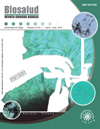Authors
Abstract
Background: Hemolysis is the destruction process of red blood cells, which involves the release of the intra-erythrocytic content into the plasma altering its composition. The main intra-erythrocytic molecule is hemoglobin, that has a characteristic absorption spectrum of the heme group, with a peak at 405 nm and several peaks between 500-600 nm, and produces a reddish color in plasma, proportional to the hemoglobin released (Figure 1). Hemolysis is usually defined as the appearance of 0.3 g/l of hemoglobin in plasma which is considered the minimum visually detectable concentration. Hemolysis in the samples to be analyzed can interfere with the results and therefore, if it is a bad test taking it should be a cause for rejection. The Veterinary Clinic Laboratory does not have a study of the behavior of different analytes, so the importance of the present study is based on determining the effects of hemolysis in canine serum on the reading of some analytes that are frequently requested in the laboratory. Objective: To describe the range of variation of the results of some analytes with respect to the amount of hemolysis in a sample. Method: The blood count was performed in the Abacus Junior Vet® equipment; the Turbidimetry method in the BioSystems A15 for Clinical Chemistry was used for the analytes. Hemolysis was induced mechanically. Results: Analysis of variance with a completely randomized design was used and statistical differences at p < 0.05 levels were determined. Interferograms which allow defining the degree of interference, if any, were carried out. Conclusion: Hemolysis in canine serum either mild (0.10 - 1.00 g/l) or severe (2.51 to 4.5 g/l) interferes with the reading of analytes ALT (Alanine Aminotransferase), Creatinine and Urea.
References
Blank DW, Kroll MH, Ruddel ME, Ellin RJ. Hemoglobin interference from in vivo hemolysis. Clin Chem 1985; 31 (9): 1566-1569.
Gómez Rioja R, Alsina Kirchner MJ, Álvarez Funes V, Barba Meseguer N, Cortés Rius M, Llopis Díaz MA. et al. Hemólisis en las muestras para diagnóstico. Revista del Laboratorio Clínico 2009; 2 (4): 185-195.
Geffré A, Friedrichs K, Harr K, Concordet D, Trumel C, Braun JP. Reference values: a review. Vet Clin Pathol 2009; 38(3): 288-98
Mehmet K, Aysel H, Aysenur A. and Serap C. Effects of hemolysis interference on routine biochemistry parameters. Biochemia Medica 2011; 21 (1): 79-85.
BioSystems (s.f.). Biolinker. [Internet] Disponible en: http://www.biolinker.com.ar/productos/PDF_BIO/a15.pdf. Consultado Marzo 2013.
Simundic AM, Nikolac N. et al. Comparison of visual vs. automated detection of lipemic, icteric and hemolyzed specimens: Can we rely on a human eye? Clinical chemistry and laboratory medicine 2009; 47 (11): 1361-1365.
Castano Vidriales JL. Interferencias causadas por la bilirrubina, hemoglobina y hemólisis en la determinación de 15 constituyentes séricos. Química Clínica 1989; 8 (1): 47-55.
Sánchez Rodríguez RC. Ecuaciones para eliminar la interferencia de sueros hemolisados, ictéricos e hiperglucémicos en las determinaciones rutinarias de química clínica. Red de Revistas Científicas de América Latina, el Caribe, España y Portugal 2002; 27 (2): 46-52.
Vidriales M, Clar MD, Lecha HD, Fernández M, Vizcaíno S. Errores relacionados con el laboratorio clínico. Química Clínica 2007; 26 (1): 23-28.
Morton DB, Abbot D, Barclay R, Close BS, Ewbank R, Gask D. et al. Removal of blood from laboratory mammals and birds. First Report of the BVA/FRAME/RSPCA/UFA W Joint Working Group on Refinement. Lab Anim 1993; 27 (1): 1-22.

 PDF (Español)
PDF (Español)
 FLIP
FLIP














